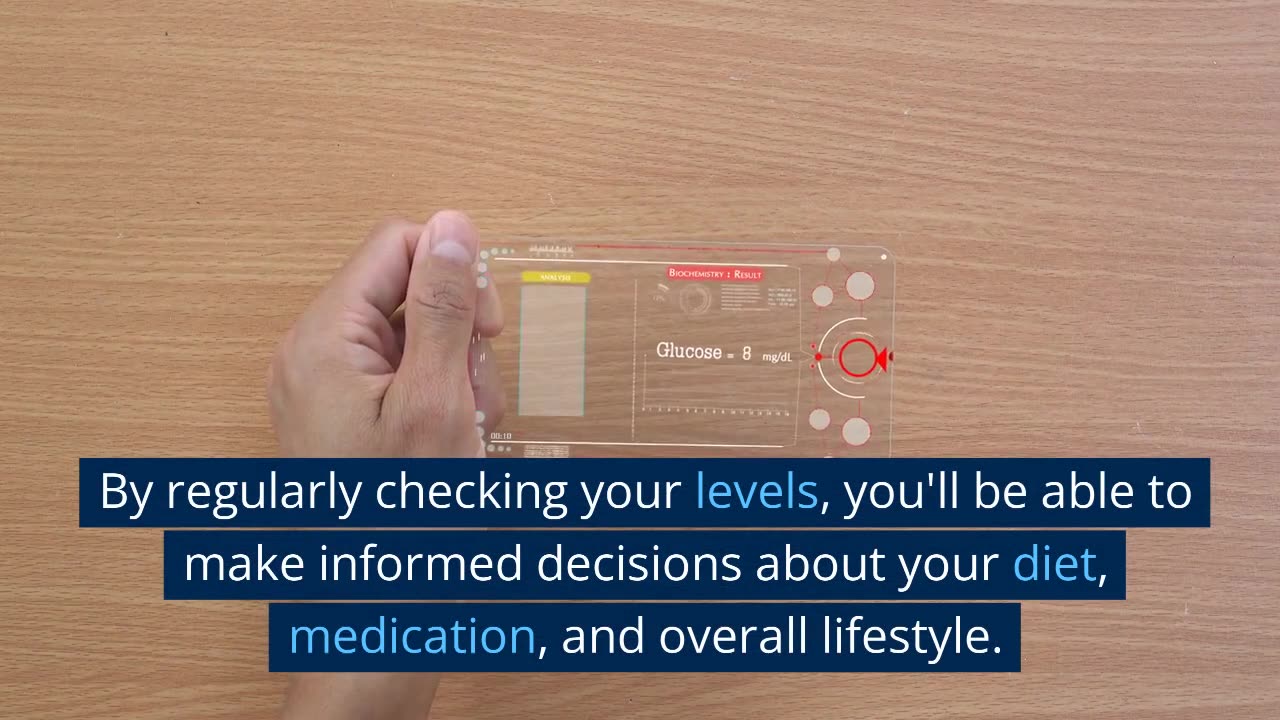Premium Only Content

Blood Glucose Monitoring 101
Blood glucose monitoring is the process of measuring the level of glucose (sugar) in the blood. It is a critical practice for individuals with diabetes, helping them manage their condition and make informed decisions about diet, exercise, and medication. Here's a summary of what blood glucose monitoring involves, its importance, and different methods used:
1. Purpose of Blood Glucose Monitoring
Managing Diabetes: Blood glucose monitoring allows individuals with diabetes to track their glucose levels and make adjustments to their treatment plan. This is crucial for maintaining stable blood sugar levels and preventing complications.
Understanding Glucose Fluctuations: Regular monitoring helps identify patterns and understand how different factors like food, physical activity, stress, or medication affect blood glucose levels.
Preventing Complications: By keeping blood sugar within target ranges, individuals can reduce the risk of diabetes-related complications, such as neuropathy, retinopathy, and cardiovascular disease.
2. Methods of Blood Glucose Monitoring
Fingerstick Tests: The most common method involves pricking a finger with a lancet to obtain a small blood sample, which is then applied to a test strip and read by a glucose meter. This method provides immediate results and is typically used by people with diabetes.
Continuous Glucose Monitoring (CGM): CGM systems use a small sensor inserted under the skin to measure glucose levels continuously. The data is transmitted to a device or smartphone, allowing for real-time monitoring and trend analysis. This method provides more comprehensive information about glucose fluctuations throughout the day.
Flash Glucose Monitoring: Similar to CGM, this system involves a sensor placed on the skin, but requires the user to scan it with a reader to obtain glucose levels. It provides more flexibility than traditional fingerstick tests and can be used to gather additional data.
3. When and How Often to Monitor
Personalized Schedules: The frequency of monitoring depends on the type of diabetes, treatment plan, and individual goals. People with type 1 diabetes often monitor multiple times a day, while those with type 2 diabetes might check less frequently.
Before and After Meals: Monitoring before and after meals helps determine how different foods affect blood glucose levels. It also helps in adjusting insulin doses or other medications.
During Physical Activity: Monitoring before and after exercise can help prevent hypoglycemia (low blood sugar) or hyperglycemia (high blood sugar) during and after physical activity.
4. Interpreting Blood Glucose Readings
Target Ranges: Healthcare providers typically provide target blood glucose ranges for different times of day, such as fasting, before meals, or after meals. These ranges guide individuals in managing their condition.
Understanding Variability: Blood glucose levels can vary due to factors like stress, illness, or changes in activity. Monitoring helps identify these variations and adjust treatment plans accordingly.
5. The Importance of Keeping Records
Tracking Patterns: Keeping a log of blood glucose readings helps identify trends over time, allowing for better management and adjustments to treatment.
Sharing with Healthcare Providers: Regular monitoring records are valuable for healthcare providers to assess treatment effectiveness and make recommendations for adjustments.
6. Tools and Technology
Advanced Glucose Meters: Modern glucose meters offer additional features like data storage, connectivity to smartphones, and integration with other health apps.
Alerts and Alarms: Some CGM systems offer alerts to warn users of high or low blood glucose levels, helping prevent emergencies.
Blood glucose monitoring is a fundamental aspect of diabetes management, allowing individuals to take control of their health and reduce the risk of complications. By using the appropriate methods and tools, and working with healthcare providers, people with diabetes can maintain a balanced approach to managing their condition
-
 1:12:22
1:12:22
Side Scrollers Podcast
11 hours agoThe Real Game Awards: Official Live Stream
72.5K14 -
 59:48
59:48
The StoneZONE with Roger Stone
4 hours agoJanuary 6 Victim Jeremy Brown Still in Jail Despite Trump Pardon | The StoneZONE w/ Roger Stone
40.5K10 -
 1:45:44
1:45:44
megimu32
6 hours agoON THE SUBJECT: Make 90s Movies Great Again
34.6K7 -
 59:46
59:46
Man in America
12 hours agoAI mRNA Vaccines, Turbo Cancer & Blood Clots... What Could Go Wrong?! w/ Tom Haviland
25.8K13 -
 1:09:15
1:09:15
Precision Rifle Network
1 day agoS4E3 Guns & Grub - Trump a new era for gun rights?
42.5K6 -
 1:05:31
1:05:31
Glenn Greenwald
7 hours agoSection 702 Warrantless Surveillance Ruled Unconstitutional: Press Freedom Advocate Seth Stern Explains; The Rise of Unions & the Impact of Trump's Populism with Author Eric Blanc | SYSTEM UPDATE #395
86.4K89 -
 1:01:13
1:01:13
The Amber May Show
6 hours ago $1.60 earnedWomen Of Rumble | Amber, Kelly and Wendy Wild
32.6K2 -
 1:16:38
1:16:38
Josh Pate's College Football Show
8 hours ago $1.26 earnedCFP Title Viewership | JP Poll Under Attack | Bama & Oregon Season Grades | Most To Prove In 2025?
34.2K -
 LIVE
LIVE
VOPUSARADIO
12 hours agoPOLITI-SHOCK! "THE TIDE IS TURNING"! 3 SPECIAL GUESTS JOINING US TONIGHT!
276 watching -
 52:47
52:47
Kimberly Guilfoyle
10 hours agoDismantling DEI Once and For All, Live with Tyler O’Neil & Eric Deters | Ep.190
90.1K32